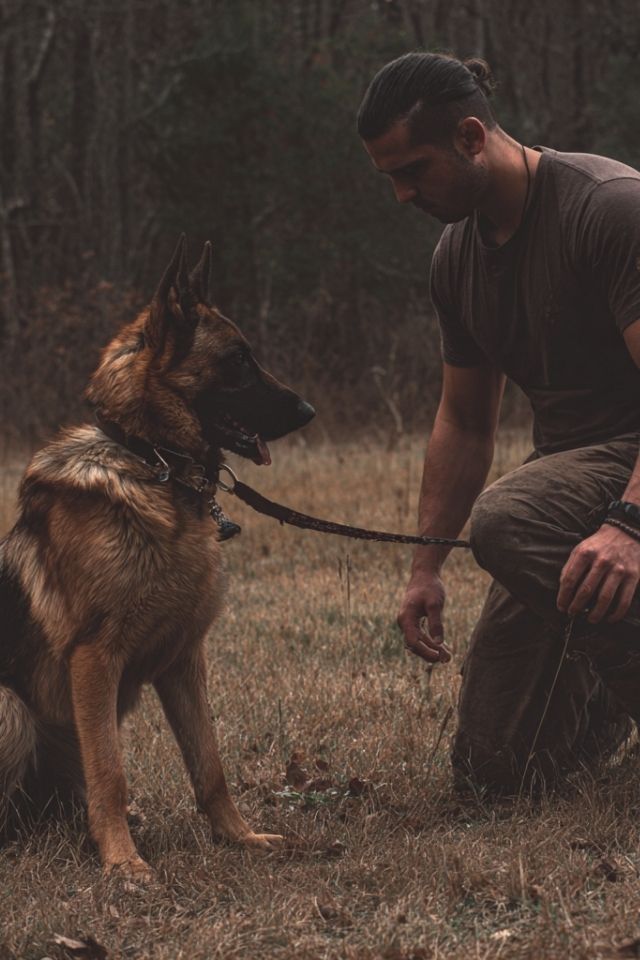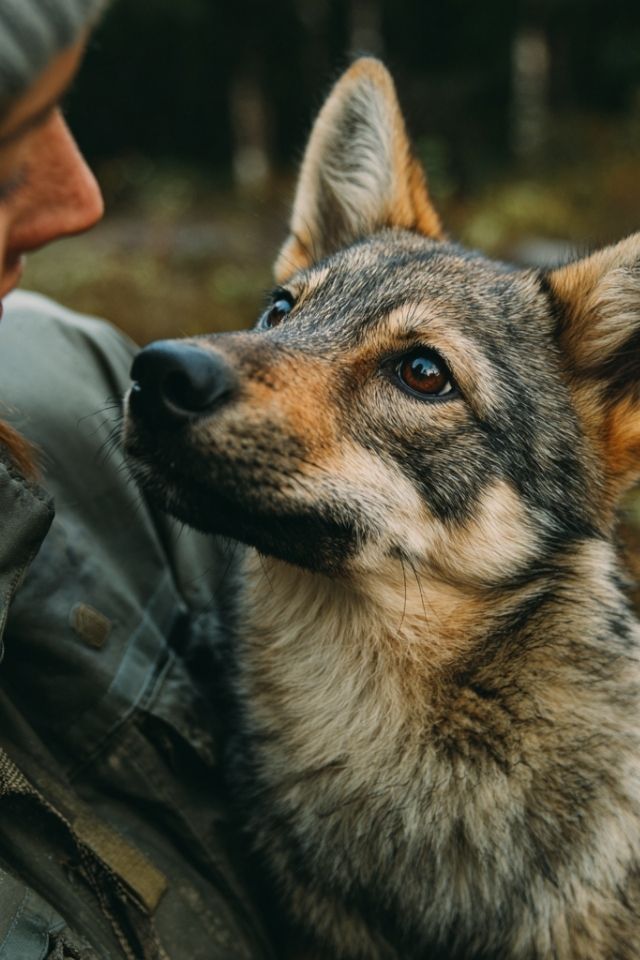Introduction: When the World Becomes Too Loud
There’s a moment every guardian knows. You’re standing in the park, calling your dog’s name, watching as they stare past you with glazed eyes – not defiant, but lost. The same companion who responds to your whispered cues at home now seems unreachable, their attention scattered like leaves in a storm. Between you stretches an invisible chasm created not by distance, but by sound.
I once watched a Border Collie named Luna – brilliant, devoted, usually dancing on the edge of her guardian’s every word – completely dissolve at an outdoor café. Traffic hummed, dishes clattered, conversations layered upon conversations. Luna’s eyes darted frantically, her body trembled, and that beautiful mind that could solve complex puzzles simply… left. Her guardian saw stubbornness. I saw a soul drowning in sensory chaos, desperately seeking an anchor she couldn’t find.
This is the hidden struggle countless dogs face daily. Their brains, exquisitely tuned for connection and cooperation, become hijacked by the cacophony of modern life. Understanding this journey from overwhelm to resilience isn’t just about training – it’s about recognizing the silent plea in those scattered moments and learning to guide our companions back home to themselves. 🧠
The Symphony of Overwhelm: Inside Your Dog’s Mind
When the Conductor Loses the Orchestra
Imagine your dog’s prefrontal cortex as a masterful conductor, orchestrating the complex symphony of attention, impulse control, and decision-making. In the quiet sanctuary of your home, this conductor waves their baton with precision – glutamate and GABA, those crucial neurotransmitters, rise and fall in perfect harmony. Your dog hears your voice above all else, a familiar melody they follow with ease.
But step into the chaos of the world, and suddenly the orchestra rebels. Street noise crashes through like cymbals struck at random. Car horns blare like rogue trumpets. The conductor – that precious prefrontal cortex – frantically waves, trying to maintain order, but the musicians can no longer hear the beat. This isn’t defiance; it’s neurological pandemonium. The brain resources meant for processing your loving guidance are consumed by a desperate attempt to catalog every potential threat.
Meanwhile, deep in the ancient parts of your dog’s brain, the amygdala sounds its primal alarm. This structure hasn’t evolved much since their wolf ancestors navigated true wilderness dangers. It doesn’t pause to evaluate whether that boom is thunder or a garbage truck – it floods the body with cortisol and adrenaline faster than conscious thought. In milliseconds, your dog transforms from eager student to survival mode, their body preparing for dangers that may exist only in sound.
The Chemical Storm Within
Picture neurotransmitters as love letters between neurons – dopamine whispers “pay attention to this joy,” while norepinephrine writes urgent notes about staying alert. In quiet moments, these messages flow like poetry, creating the neurological foundation of your Invisible Leash, that ineffable connection transcending physical restraint.
But noise doesn’t just add more letters – it sets the entire postal system on fire. Dopamine’s gentle encouragement becomes lost in the chemical storm. Norepinephrine floods the system until every sensation screams with equal urgency. The delicate neurochemical dance that allows your dog to feel the reward of connection, to experience the joy of cooperation, collapses into chaos. They cannot access the feeling of rightness that normally comes with responding to you – not because they’ve forgotten their love, but because the pathway to expressing it has been temporarily severed by stress.
Reading the Unspoken: Your Dog’s Silent Signals
The Language of Overwhelm
Watch closely when the world becomes too loud, and you’ll see your dog writing their distress story with their body. It begins subtly – perhaps just a tightening around the eyes, ears that swivel like anxious radar dishes seeking the source of each sound. Their breathing shifts from the easy rhythm of safety to shallow, rapid pants, as if they can’t quite catch their breath in this ocean of noise.
The Early Whispers of Distress:
- Eyes that dart but never quite land, seeking something they cannot find
- A tail that freezes mid-wag, uncertain whether to signal friend or foe
- Muscles that hold themselves ready for flight, even while standing still
- That peculiar stillness that comes before the storm – not calm, but the absence of natural movement
When Whispers Become Shouts:
- The strange, dissociated freeze – present in body but gone in spirit
- Displacement behaviors – the frantic scratching at nothing, the obsessive licking of lips that aren’t dry
- The desperate lean against your legs, seeking the anchor of your physical presence
- Vocalizations that aren’t quite barks – confused sounds of a soul seeking understanding
These aren’t acts of rebellion. They’re chapters in a story of a nervous system overwhelmed, a heart seeking safety in a world that suddenly feels too large, too loud, too much.
The Weight of History
Every dog carries an invisible backpack filled with their acoustic memories. The herding dog bears the genetic legacy of ancestors who survived by noticing every rustle that might signal a predator stalking the flock. Their exquisite sensitivity, once lifesaving, now becomes a burden in our cacophonous world. They cannot simply “turn off” millennia of evolutionary programming because we’ve moved from pastures to city parks.
Consider the puppy who experienced their first thunderstorm alone, their amygdala carefully filing this terror under “sounds that mean the world is ending.” Or the rescue whose past remains unspoken but whose body remembers every sharp sound that preceded pain. These experiences don’t just create memories – they literally rewire the brain’s response to sound, creating neural highways that lead straight from noise to panic. The NeuroBond between dog and guardian can help navigate these pathways, but first, we must understand they exist. 🐾
The Invisible Burden: Cognitive Overload
When the Mind’s Desktop Crashes
Imagine your dog’s working memory as a beautifully organized desk where they process the world. In quiet moments, there’s space for everything – your voice, the learned cues, the joy of cooperation. But noise doesn’t politely add a few papers to this desk. It upends filing cabinets, scatters documents everywhere, floods the surface until nothing can be found or processed.
Research reveals what we see in those scattered moments – noise creates such cognitive burden that even simple tasks become impossible. The command “sit” might as well be spoken in ancient Sanskrit when the brain is desperately trying to process whether that siren means danger, if that barking signals threat, whether that rumbling requires escape. The desktop hasn’t just become messy; it’s crashed entirely, requiring a full restart in quietness before normal function can resume.
Even after the noise fades, cortisol continues its relentless work, impairing the hippocampus where memories live, disrupting the prefrontal cortex where decisions are born. Your dog remains lost in a chemical fog that can persist for hours, their brilliant mind temporarily dimmed by the biological aftermath of acoustic assault.
The Journey Back: Building Resilience Together
The Art of Invisible Progress
True desensitization is like teaching someone to swim by starting with a single drop of water. You begin with sounds so quiet they barely exist – perhaps a recording of thunder played at a whisper while your dog enjoys their favorite massage, their nervous system learning that storm sounds can coexist with safety.
The Gentle Progression:
- Weeks 1-2: Sounds like distant memories, barely there during moments of joy
- Weeks 3-4: Slightly clearer, like someone humming in another room
- Weeks 5-6: Present but not prominent, woven into training games
- Weeks 7-8: Clearer still, but balanced with movement and play
- Weeks 9-12: Approaching reality, but supported by your steady presence
The magic lives in the invisibility of progress. Your dog should never notice they’re becoming braver. Each session should feel like nothing is happening – just another pleasant afternoon together. This isn’t training; it’s rewiring the very foundation of fear, one inaudible step at a time.
Rewriting the Emotional Story
Counterconditioning transcends simple training – it’s emotional alchemy. You’re not just teaching your dog to tolerate noise; you’re helping them discover that thunder predicts liver treats, that sirens announce play sessions, that the world’s chaos might actually herald delight.
The moment holds everything: sound begins, joy appears. Not before, not after, but in perfect synchrony. Your dog’s brain, that pattern-seeking miracle, begins to anticipate pleasure where once lived fear. This isn’t about bribery – it’s about fundamentally rewiring the emotional resonance of sound, creating new neural pathways that lead from noise to joy rather than terror.
The Ancient Path of Scent
When traditional focus crumbles, we turn to something older, deeper – the seeking system that predates domestication itself. Scent work engages neural pathways that noise cannot touch, creating what I call “the hunter’s trance” – that flow state where the world narrows to following invisible trails of molecules.
Watch a dog truly engaged in scent work, and you’ll see transformation. The scattered attention consolidates, the frantic energy channels into purpose. They’re no longer a victim of their environment but an active participant in an ancient dance. This isn’t distraction from fear – it’s engagement with something so fundamentally satisfying that fear simply cannot coexist. The Soul Recall happens not through command but through connection to their deepest, truest nature. 🧡
Creating Sanctuary: Environmental Grace
The Architecture of Safety
Every sound-sensitive dog deserves what I call a “soul sanctuary” – a space where the world’s volume dial turns down and their nervous system can finally exhale. This isn’t about isolation but about offering choice, that fundamental gift of agency that transforms victims into participants.
Elements of Sanctuary:
- Layers of softness – curtains that muffle the world’s sharp edges
- The gentle constant of white noise – like rain that never becomes storm
- Textures that comfort – beds that embrace, blankets that smell of safety
- Special treasures that only exist here – puzzle feeders that turn anxiety into focus
- The dignity of choice – always accessible, never forced
Some guardians worry that offering retreat enables fear. But watch your dog choose their sanctuary during a storm, see their body soften as they settle into safety, and you’ll understand – this is empowerment, not escape.
The Deeper Truth: Beyond Training to Understanding
Recognizing the Misunderstood
How many dogs live with the label “stubborn” when they’re actually drowning? That Labrador who “refuses” to come when called at the park isn’t choosing disobedience – their brain literally cannot process your voice over the environmental symphony. The terrier who “suddenly became aggressive” hasn’t changed personality; they’ve reached the breaking point of chronic acoustic stress.
The Heartbreaking Misinterpretations:
- “Ignoring me” = Cannot neurologically process your cue
- “Being difficult” = Overwhelmed beyond coping capacity
- “Knows better” = Knowledge trapped behind walls of stress
- “Acting out” = Desperately trying to communicate distress
When we punish overwhelm, we add emotional injury to neurological insult. But when we recognize the struggle, when we see past behavior to the being beneath, everything changes. The guardian transforms from adversary to advocate, from trainer to partner in navigation.
Conclusion: The Promise of Understanding
What appears as simple distraction reveals itself as a complex symphony of neuroscience, emotion, and experience. Your dog’s inability to focus in noise isn’t failure – it’s a window into a soul trying to navigate a world that often feels too loud, too fast, too much.
The path forward doesn’t require silence but understanding. When you recognize those moments of scatter as requests for help rather than acts of defiance, when you see the wisdom in retreat rather than the shame of fear, when you understand that resilience is built drop by drop rather than demanded all at once – that’s when the true healing begins.
This isn’t just about creating dogs who can focus despite noise. It’s about honoring the fullness of their experience, recognizing that their sensitivity is not weakness but awareness, that their struggle is not stubbornness but overwhelm. It’s about strengthening that Invisible Leash not through force but through understanding, creating a NeuroBond that transcends the chaos of the world.
So the next time your companion seems lost in the noise, remember: you’re not just their trainer or even their guardian. You’re their anchor in the storm, their translator in chaos, their bridge back to themselves. And in that role lies both profound responsibility and infinite grace. 🐾






